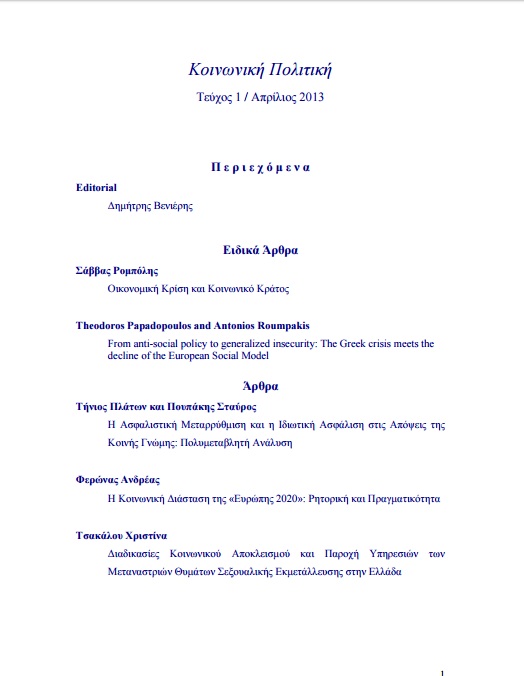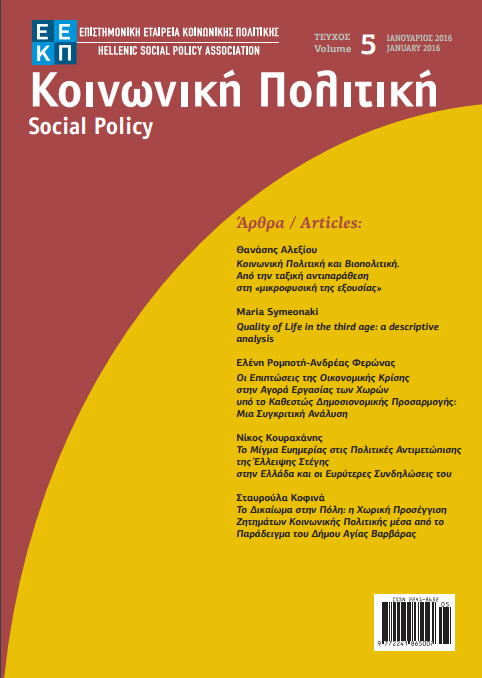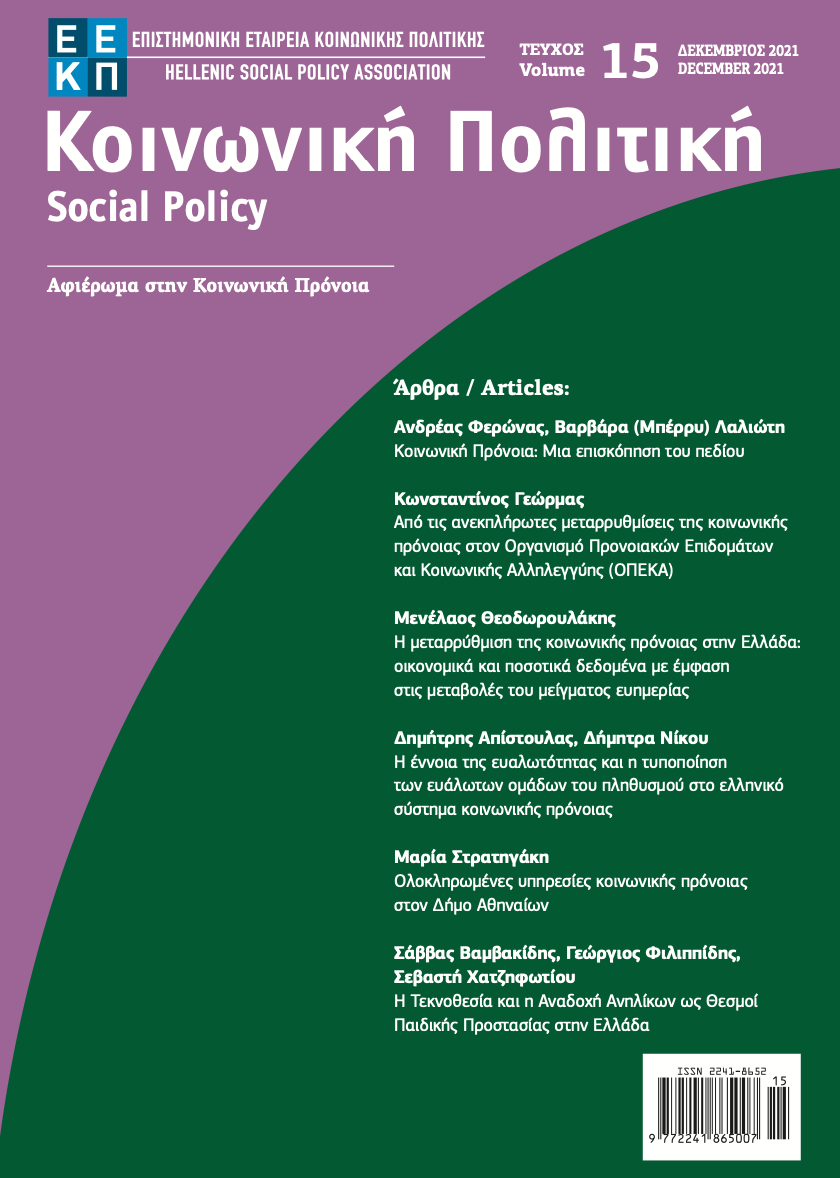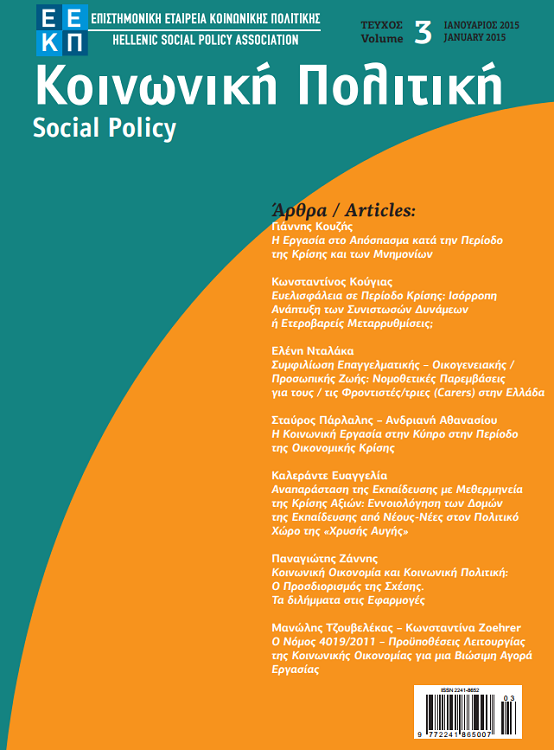Καθεστώτα Ευημερίας και Έλλειψη Στέγης: Τι Είδους Σχέση;
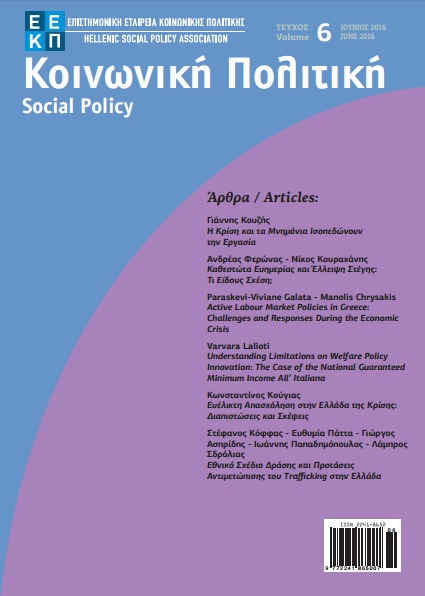
Περίληψη
Το άρθρο διερευνά τη σχέση μεταξύ των ευρύτερων χαρακτηριστικών της δομής των καθεστώτων ευημερίας με το φαινόμενο της έλλειψης στέγης. Για την επίτευξη αυτού του στόχου, στο πρώτο μέρος επιχειρείται μια επισκόπηση της βιβλιογραφίας περί καθεστώτων ευημερίας και της σύνδεσής τους με το φαινόμενο της έλλειψης στέγης. Το δεύτερο μέρος περιλαμβάνει την εμπειρική διερεύνηση, η οποία διενεργείται με τη συγκριτική ανάλυση πρωτογενών στατιστικών δεδομένων και την ποιοτική επεξεργασία εκθέσεων και κειμένων που αναφέρονται σε εθνικές στρατηγικές για την έλλειψη στέγης σε έξι χώρες εκπροσώπους των καθεστώτων ευημερίας. Το βασικό συμπέρασμα που προκύπτει από την ανάλυση είναι ότι οι δυσκολίες απόδειξης μιας ευθύγραμμης σχέσης μεταξύ καθεστώτων ευημερίας και έλλειψης στέγης επιβεβαιώνονται. Η διαθεσιμότητα αξιόπιστων και συγκρίσιμων πρωτογενών δεδομένων αποτελεί απαραίτητη προϋπόθεση για την περαιτέρω διερεύνηση ενός, μέχρι σήμερα, ανεξερεύνητου προβλήματος ακραίας φτώχειας και κοινωνικού αποκλεισμού.
Λεπτομέρειες άρθρου
- Πώς να δημιουργήσετε Αναφορές
-
Φερώνας Α., & Κουραχάνης Ν. (2017). Καθεστώτα Ευημερίας και Έλλειψη Στέγης: Τι Είδους Σχέση;. Κοινωνική Πολιτική, 6, 21–44. https://doi.org/10.12681/sp.10879
- Τεύχος
- Τόμ. 6 (2016)
- Ενότητα
- Άρθρα

Αυτή η εργασία είναι αδειοδοτημένη υπό το CC Αναφορά Δημιουργού 4.0.
Οι συγγραφείς των άρθρων που δημοσιεύονται στο περιοδικό διατηρούν τα δικαιώματα πνευματικής ιδιοκτησίας επί των άρθρων τους, δίνοντας στο περιοδικό το δικαίωμα της πρώτης δημοσίευσης. Άρθρα που δημοσιεύονται στο περιοδικό διατίθενται με άδεια Creative Commons 4.0 και σύμφωνα με την άδεια μπορούν να χρησιμοποιούνται ελεύθερα, με αναφορά στο/στη συγγραφέα και στην πρώτη δημοσίευση για μη κερδοσκοπικούς σκοπούς και με δικαίωμα τροποποίησης μόνον με παρόμοια διανομή (αν αναμείξετε, τροποποιήσετε, ή δημιουργήσετε πάνω στο υλικό, πρέπει να διανείμετε τις δικές σας συνεισφορές υπό την ίδια άδεια όπως και το πρωτότυπο).




